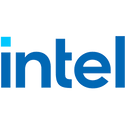
Steam Survey August 2024 Update: Windows 11 Crosses 50% Share, Blows Past Windows 10
The latest Steam hardware and software survey reveals a significant shift in the gamer's operating system landscape, with Windows 11 gaining 3.36% among Windows OSes and finally surpassing the 50% mark in August 2024, now standing at 50.81%. This milestone is a notable achievement, considering the OS had been experiencing a decline in popularity just a month prior. The sudden surge in Windows 11 adoption can be attributed to users transitioning from Windows 10, which lost 3.29% of its user base in the same period. Additionally, a few users on older Windows versions, such as 8.1 and 7, have also switched to Windows 11.
Despite Windows 11's growing popularity, Windows 10 remains a formidable presence, with 48.66% of Steam users still preferring the older OS. Its success can be attributed to its stability and compatibility with a wide range of games and hardware. Many users have expressed concerns over Windows 11's performance and its stringent hardware requirements, which have made it less accessible for some gamers, especially those without the TPM 2.0-enhanced system. However, with Microsoft set to discontinue security updates and technical support for Windows 10 on October 14, 2025, users will need to consider upgrading to Windows 11 or another supported OS in the near future. The periodical resurgence of Windows 10 suggests that some users are hesitant to give up the older OS, but the writing is on the wall. As the deadline for Windows 10 support approaches, more users will likely make the transition to Windows 11.
Despite Windows 11's growing popularity, Windows 10 remains a formidable presence, with 48.66% of Steam users still preferring the older OS. Its success can be attributed to its stability and compatibility with a wide range of games and hardware. Many users have expressed concerns over Windows 11's performance and its stringent hardware requirements, which have made it less accessible for some gamers, especially those without the TPM 2.0-enhanced system. However, with Microsoft set to discontinue security updates and technical support for Windows 10 on October 14, 2025, users will need to consider upgrading to Windows 11 or another supported OS in the near future. The periodical resurgence of Windows 10 suggests that some users are hesitant to give up the older OS, but the writing is on the wall. As the deadline for Windows 10 support approaches, more users will likely make the transition to Windows 11.































































